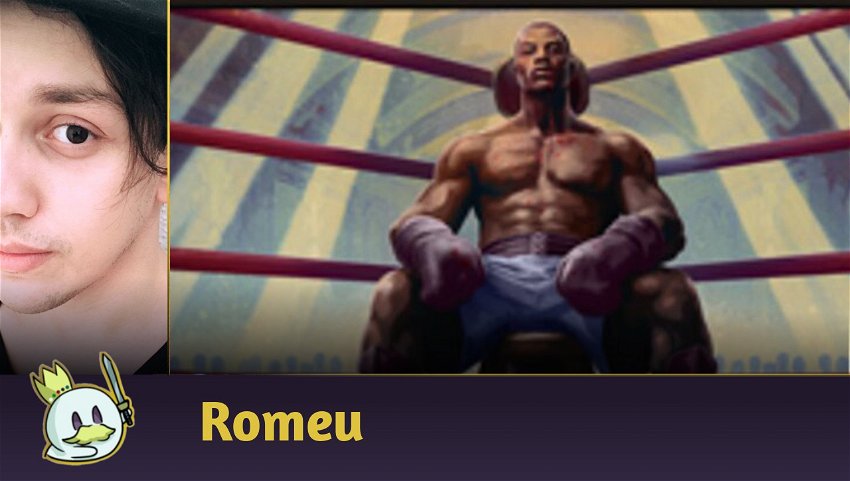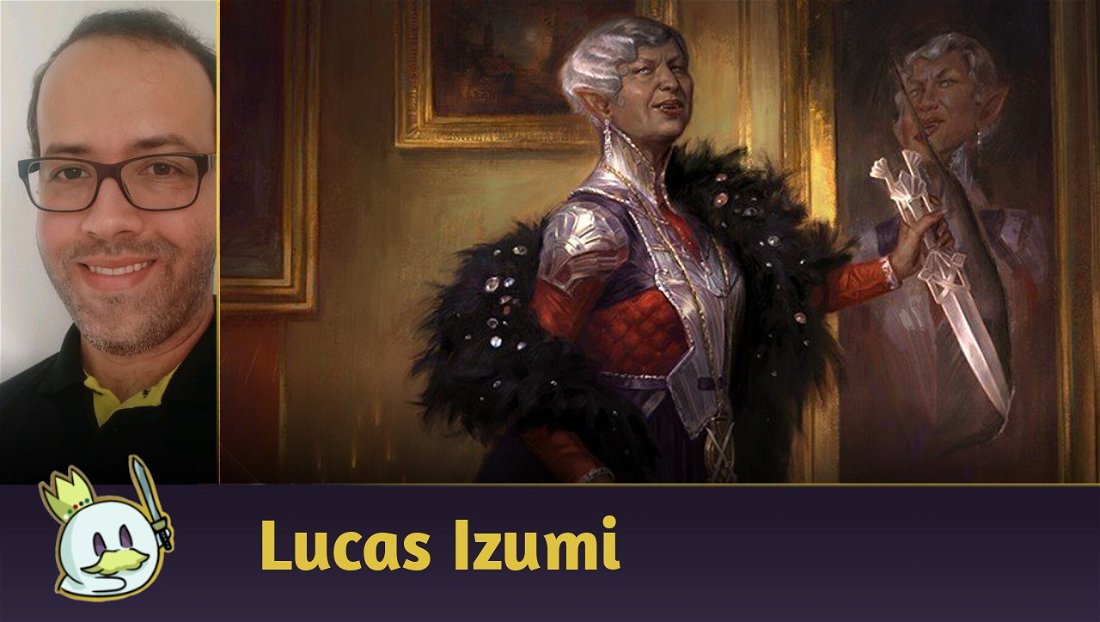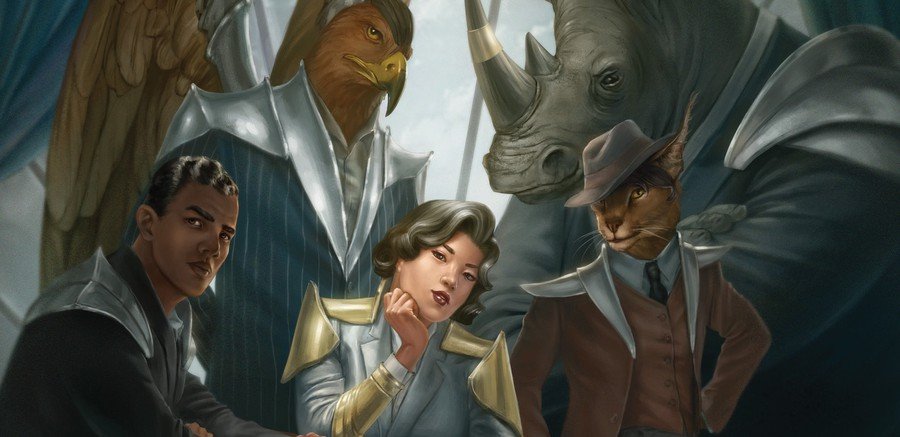It's been two weeks since Streets of New Capenna was released around the world, and it's impossible not to consider that the new edition has brought significant changes to some competitive formats, especially Standard, which has received powerful additions to multicolored lists, collaborating to establish new archetypes and reinforce strategies already widely known in the Metagame.
Today, in particular, I'll be taking a look at the first quarter of Streets of New Capenna on Standard, and how the new release impacted the format, which decks emerged, which ones benefited, and what we can expect in the future.
I plan to conduct a broader analysis covering other competitive formats two weeks from now, when the one-month timeframe will allow for a more comprehensive analysis of how the eternal formats are utilizing the new additions and strategies made possible by the new cards.
The New Contenders
First, let's take a look at the two new archetypes that have emerged in the last few weeks and that currently occupy the top spot in the Metagame:
Esper Midrange
Starting with the archetype that has quickly climbed to the top, Esper Midrange existed before New Capenna as a variant of Orzhov Midrange, which sought to run the planeswalker Kaito Shizuki as a value bomb alongside creatures with useful effects such as Luminarch Aspirant and Legion Angel. But the archetype worked especially with the proposal to take the game to longer turns where your Planeswalkers, like Lolth, Spider Queen, Sorin the Mirthless and The Wandering Emperor would dominate the board.
Now, coupled with the efficient plan that still involves Planeswalkers, Esper Midrange has some of the best cards in the new set because of the Obscura family.

Combining these cards allows the archetype to operate with a much more proactive game plan in the first few turns.

Among them, I suppose the most notable addition is Raffine, Scheming Seer.
Raffine is a creature that has evasion and protection built into an unimpressive body, but for an attractive cost and an ability that makes any of its creatures a potential threat (including Raffine himself, being able to grow quickly with one or two attacks after it enters the battlefield).
In addition, Connive allows the player to filter cards from their hand incredibly well, removing useless (or reusable options in the graveyard, such as Tenacious Underdog and Malevolent Hermit) while keeping useful interactions.

Another creature that has been standing out in several decklists in New Capenna Standard is Tenacious Underdog, an aggressive early game body that offers a clock and draw for four mana and 2 life on late-game, serving as a recurring card advantage engine that can be easily discarded with Connive, creating a very interesting interaction between both mechanics.

In my Pioneer review, I compared Obscura Interceptor with Venser, Shaper Savant, which saw plenty of play on multiple occasions in various formats. At least in Standard, it appears the new creature has demonstrated its effectiveness in significantly delaying the opponent's game plan while advancing their own, serving as one of the most powerful Tempo plays the format currently offers.

Some lists have also been running a copy or two of Elspeth Resplendent as a way to dig
deeper into the deck for the right creatures, or to bolster the power of your creatures in a more proactive game.

There are also some lists that seek to diversify your interaction package with efficient removals like Void Rend, as well as a modal effect that will rarely be useless to its controller with Obscura Charm.
Jund Midrange
There are several Jund Midrange variants in Standard today, but they all have in common the powerful interplay between Ob Nixilis, the Adversary and Esika's Chariot

Since Ob Nixilis has a Casualty cost that allows him to create a token that is a copy of himself, this token being non-legendary, it is possible to make the token be copied over and over again with Esika's Chariot every time the vehicle attacks. Even if one or two Ob Nixilis, the Adversary doesn't do that much damage, multiple copies of it easily stack up and create a compelling snowball effect.
The truth is that Ob Nixilis, the Adversary, so far, hasn't done as much in Standard as it promised to do, something that's probably down to the fact that there are a lot of higher quality plays to be made in turn 3 or later, overshadowing the Planeswalker and demanding more specific situations so that it actually works as it proposes.
Among the current Jund versions, one proposes a more proactive and aggressive game plan, trying to end the game quickly, but without giving up the value that cards like Esika's Chariot, Fable of the Mirror-Breaker and Ob Nixilis, the Adversary offer.

In this version, the highlight is Ziatora's Envoy, which allows its controller to play cards from the top of their deck or add them to the hand as it deals combat damage, allowing the archetype to be able to keep the gas while interacting absurdly well with Reckless Stormseeker and Halana and Alena, Partners.

Another highlight of some lists has been Riveteers Charm as a modal effect that works both as a removal and as a "draw 3" for three mana at Instant-Speed, which can be used on the opponent's end step to give you three extra options until the end of your next turn.
Another version of the archetype includes a well-known plan: run Magda, Brazen Outlaw's interaction with Jaspera Sentinel to build up mana in the first few turns and cast bombs like Goldspan Dragon in the first few turns.
The strategy now has a Dragons sub-theme, as it has not only Moonveil Regent and Goldspan Dragon, but also Ziatora, the Incinerator and Inferno of the Star Mounts to increase Dragon's Fire's reach.
Other versions seek to prolong the game and accumulate value through Workshop Warchief and Titan of Industry.

Both cards appear with some frequency on the sideboard of most current lists, but in this version, the focus is on trying to play “over” the opponents and recover early game damage with good removals coupled with lifegain and tokens created by these two threats.

Being almost ubiquitous on all lists (whether on maindeck or sideboard), one of the biggest highlights of New Capenna for Jund was Unleash the Inferno as an extremely powerful removal that also allows you to mitigate the damage that cards like Wedding Announcement or Esika's Chariot create, as you can deal with a creature/planeswalker and an artifact/enchantment with just one card.
The Old Acquaintances
Naya Runes
Naya Runes is still one of the highest winrate archetypes of the current Standard, with virtually no new additions (apart from a few Jetmir's Garden), and this is because the archetype is extremely consistent in creating, within a very few turns, a position that is difficult to overcome.
This in addition to having an extremely synergistic creatures package, making each of them a must-answer threat to prevent the opponent from accumulating too much value in the long run.

Another reason for its success is that it preys on unrefined lists, very common in the first few weeks of a new release, where players are eager to try out what's new and take time to refine them to the point where they can perform well against faster, more consistent archetypes.
Mono-White Aggro
Mono-White Aggro is still one of the best Aggro decks in Standard, even after so many releases (and the ban on Faceless Haven), and it has proven to be very effective at dealing well against Naya Runes as Thalia, Guardian of Thraben and Archon of Emeria are two huge obstacles for an archetype that wants to explode fast by casting multiple spells in a single turn.
In addition, its disruption package turns out to be very efficient in delaying opponents who, as mentioned in the case of Naya Runes, seek to experiment with new strategies and new cards with lists not always so refined as to be able to behave well against archetypes looking to play “under”.
Rakdos Sacrifice
Rakdos Sacrifice was already doing well, thanks to interactions between Oni-Cult Anvil, Experimental Synthesizer, The Meathook Massacre and the various Blood token producers such as Voldaren Epicure and Bloodtithe Harvester to create an engine that allowed you to take advantage of a long and attrition-oriented game.

In a sacrifice-oriented archetype, it was obvious that Ob Nixilis, the Adversary would find a home to establish the pressure while interacting with the rest of the list, while Tenacious Underdog offers a fast clock with the perfect creature to be sacrificed with Deadly Dispute and Henrika Domnathi, or discarded for Blood tokens.
Orzhov Midrange
Although most players have opted to migrate to Esper Midrange, the Orzhov version, which seeks to establish card advantage with a less proactive and more Planeswalker oriented game plan with efficient removals and various 2-for-1 or 3-for-1 effects is still a competitor in Standard and should be considered when we think about big events or tournaments like Challenges and the like.
Honorable Mentions
Mardu Midrange
Trying to combine the best of both worlds, Mardu Midrange has been growing with occasional results recently.
As it is a combination of the aggressive plan with Luminarch Aspirant and Tenacious Underdog coupled with Planeswalkers in Late-Game and efficient removals that can be found in either Jund or Esper decks, there is not much to say about this one., but deserves an honorable mention between both decks above.
Temur Magda
Another archetype that deserves an honorable mention is Gruul and Temur Magda who have used Jinnie Fay, Jetmir's Second

Jinnie essentially allows any token created to become a 3/1 Vigilance or 2/2 Haste creature, setting a significant clock boost when coupled with recurring tokens produced by Gala Greeters, Goldspan Dragon or Magda, Brazen Outlaw.
Selesnya Magecraft

Illuminator Virtuoso is a powerful creature that can end the game in a few turns in the right shell. And for Standard, this shell has been taken advantage of in the form of White-Based Magecraft, which adds low-cost spells that increase the power of their creatures or protect them from removal, as they do with Heroic in Pauper or Pioneer.
Izzet Bombardment

Big Score appears in several archetype variants between Izzet, Jeskai, and even Grixis as an improved version of Unexpected Windfall, and archetypes based on Lier, Disciple of the Drowned continue to appear in the Metagame occasionally.

On this list, Arcane Bombardment is the big surprise for a deck that usually has no trouble getting to a turn where it becomes possible to take advantage of the enchantment on the same turn you cast it, or the turn after you cast it on turn 5.
Brokers Ascendancy
Complementing the small-creature based roster, the archetypes based on Brokers Ascendancy have done a few good results in Leagues and Challenges.

Its strategy is an Aggro / Ramp that seeks to use small creatures to speed up the cast of bombs like Esika's Chariot, Elspeth Resplendent and The Wandering Emperor, while the new enchantment makes each one of them a potential threat as the game progresses.

These lists also run one or two copies of Falco Spara, Pactweaver to create a powerful interaction which allows you to cast cards from the top of your deck, removing +1/+1 counters from your creatures.
To increase the clock and even end the match against an unprepared opponent, there is also a slight splash to red (being greatly facilitated by the Treasure tokens produced by Gala Greeters and Prosperous Innkeeper) to cast Jetmir, Nexus of Revels.
Orzhov Angels
Angels tribal was definitely not what I expected to see in the Standard competitive scene, but here we are:

Giada, Font of Hope definitely gives players a reason to look for ways to unite cards that already interact well in the tribal aspect, like Youthful Valkyrie and Righteous Valkyrie alongside important support, like Rampage of the Valkyries and Firja's Retribution, creating a consistent base that can pay off in environments where there are fewer removals and more exchanges between creatures.
Naya Reanimator
And at last, a list that appears with some frequency in the last week on Magic Arena is Naya Reanimator, which plays Invoke Justice to return bombs like Velomachus Lorehold or Titan of Industry from the graveyard to the battlefield.

Given how much how fast this list can put gigantic creatures into play (thanks to the Treasure tokens created by Seize the Spoils, Big Score, Unexpected Windfall and Fable of the Mirror-Breaker ), it won't surprise me if we see it develop in the coming weeks into a more competitive version that manages to hold up well if its plan A goes wrong, given that in a format where Riveteers Charm is appearing often on the maindeck, it seems like a bad idea to rely solely on the graveyard and the absence of interaction to win the game.
Conclusion
That's a breakdown of Standard's top decks in the first two weeks of Streets of New Capenna, along with a summary of how each of these archetypes, especially the new ones, work.
It is important to note that Standard is the format that moves the most when being changed by new releases, always following a chain where a “best deck” exists until players discover how to play against it. Today, the best deck is definitely Esper Midrange, and it will be up to us to assess how to interact against it and how long it will take for another potential competitor to step in and take its throne.
We have a long way to go, as Dominaria United is scheduled to come out only in September, which means that we will have almost five months with the current format, and it will be necessary to know how to evaluate the options and the relatively large cad pool that Standard has now, exercising creativity to deal with the Metagame until the next release.
Thanks for reading!













— Comments 0
, Reactions 1
Be the first to comment